On the morning of March 14th, 2019 the usually unflappable world of Formula 1 awoke to the shocking news that its sporting kingpin Charlie Whiting had succumbed to a pulmonary embolism in his Melbourne hotel room, just three days before the start of the F1 season. Once the shock had sunk in and the permanence of Charlie’s passing grasped the logical question was: “What now?”
Fortune seemingly smiled upon F1 during its period of tragic misfortune, for travelling home to Australia from Formula E’s Hong Kong was Michael Masi, the then 38-year-old motorsport administrator with widespread experience in race and rally direction in his homeland. A lifelong motorsport fan, he ‘gofer’-ed for local teams in his teens and gradually worked his way up the ladder, impressing at every stage with his diligence.Crucially, the previous year Masi had been selected as one of three understudies to Whiting. In 2017 he acted as deputy race director in Formula 2 and Formula 3, a role he was scheduled to reprise – with additional responsibilities – in 2018. Thus, via succession planning, Masi was in the right place to fill the void left by Whiting.
He was determined to do his mentor – and the sport they both loved – extremely proud. The fact that he was confirmed for the role within six months by FIA president Jean Todt speaks volumes; that he is still there after almost three years on even more so.
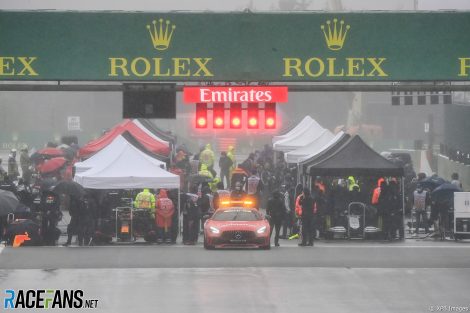
The FIA had originally earmarked Laurent Mekies and Marcin Budkowski as Whiting’s understudies as F1 sporting and technical heads respectively, having realised that Whiting’s numerous roles had evolved around his unique skill sets, and that they would thus be unable to replace him with a single individual. Indeed, it was once said within FIA corridors that “Charlie doesn’t have a single job description, he has 73…”
However, both deputies departed the governing body after receiving senior executive offers from teams – the former from Ferrari; the latter from Renault – and thus the FIA identified two administrators as replacements, namely Masi and Scott Elkins – the latter now the race director for Formula E and Extreme E. As an aside, Whiting’s technical role was inherited by Nikolas Tombazis.
“After Laurent advised [the FIA] that he was moving to Ferrari Charlie contacted myself and asked if I would be interested in filling a deputy role,” explains Masi. “Throughout 2018 I did a number of events, Scott did a number of events.” The decision was eventually taken for Elkins to concentrate on FE with Masi spending 2019 working with Whiting in deputy roles for F1 and its two junior categories.
This split between sporting and technical responsibilities is significant difference, yet three years on many within the paddock still perceive Masi to be a direct replacement for Whiting. But as was the case with his mentor, Masi does not determine or hand down penalties – that is the role of stewards, who are independent. The race director merely flags up what he considers to be breaches. Masi’s role is regulatory, not judicial.
Advert | Become a RaceFans supporter and
A parallel is the civilian legal system: policemen flag up what they consider to be breaches of law and investigate them, with judges handing down any punishments. Thus, to blame Masi for controversial penalty decisions (or technical issues) is not only misguided but grossly unfair.
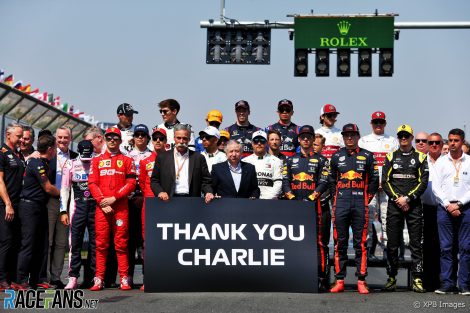
He has no doubts that he had what he calls “the basis of the technical competencies of being race director,” but admits that he would have preferred another two or so years to better understand some of the complexities of F1.
“Sitting beside Charlie for another two to four years, however long he may have chosen to ultimately stay in the role, would have been amazing. I’ve said a number of times that the part I really missed – and still do miss on a number of occasions – is having that point of reference of understanding why certain things historically may have happened in certain ways or understanding why certain things were done in certain ways.”
It was, he says, a steep learning curve, although it has lessened as time has gone on not least due to “the support that I’ve had internally, from my team at the FIA, the broader FIA as an organisation and in particular the 10 sporting directors in the teams who have been hugely supportive.
“A number of them have been around from their days of being mechanics on cars, all the way through so they’ve seen F1’s evolution and progression. By speaking to them I’ve got an understanding of why certain things happened in certain ways which has been a huge help for having those points of reference. But many more years of having Charlie’s assistance and guidance would have been amazing.”
The plan, says Masi, had always been to divide Whiting’s various roles by spinning off the technical functions and adapting the sporting portfolio in line with F1’s evolutionary nature, its ever-increasing complexities and those of other single seater categories and motorsport’s burgeoning calendars.
“There’s obviously my role as the single seater sporting director, I have a lot more to do with the entire single seater ladder on a day-to-day basis [than did Whiting],” he explains, “So all the way from F1 to F4, then I have my core F1 team that does the operations, the IT, etc and I’m the safety delegate for all the F1 events.
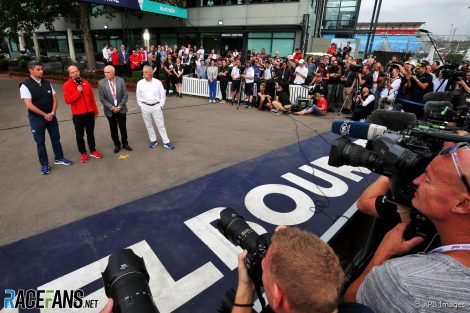
That first race in 2019 remains the only grand prix Masi has run in his home country. During a previous interview about the effects of Covid on F1, Masi outlined the disappointment he experienced as part of the team that cancelled the 2020 season opener in Melbourne, pointing out, correctly, that although the decision rapidly reverberated around the world, a week the entire world itself shut down. So, of the 50 races including Spa, which event was the most challenging?
“Obviously, Melbourne 2019 was hugely challenging for obvious reasons,” he says after some lengthy reflection. The Belgian Grand Prix later that year, which witnessed the tragic death of upcoming racer Anthoine Hubert during Saturday’s Formula 2 race, was another.
“Antoine’s passing was hugely challenging for different reasons, of the broader role of keeping the team together and working through all those tragic sets of circumstances. Then I would also add Bahrain last year, Romain [Grosjean’s] accident for a different set of reasons.
Advert | Become a RaceFans supporter and
“Then Spa last weekend would probably fall into that mix of ‘challenging’,” he says. He also puts forward the 2019 German Grand Prix, not because of any serious accident, but the havoc wreaked by the weather. “I didn’t realise until after the race how challenging it had been due to the changing weather conditions,” he says.
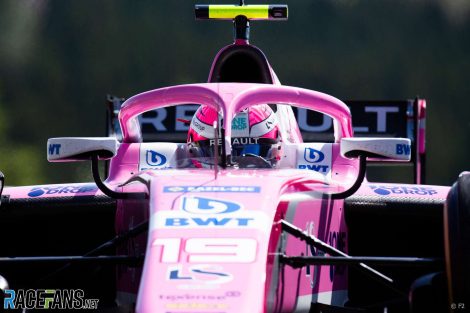
Before Hubert’s accident he had experienced death during a race weekend twice before during his role in change of Australia’s Supercars series and its junior categories. “There was Mark Porter’s fatality at Bathurst and then there was Ashley Cooper’s fatality in the support race for the Adelaide 500,” he says. “So I’ve dealt with that type of [occurrence], of working with the team and supporting the overall team through that type of tragic event.”
As covered here recently, the use of the red flag has become increasingly common in Formula 1 of late. Not only did it appear six times during the Zandvoort weekend (only the race itself passed without interruption), but each of the previous three races was stopped and restarted.
I ask him whether there this is entirely due to safety concerns or have red flags become the default option whenever an incident occurs.
“It depends on the session,” Masi says. “Obviously in qualifying if there’s a car in a barrier no one can set a time because it would be a double waved yellow flag so it’s a practical issue to give everyone a fair opportunity on a clean track. Practical safety.
“During races a lot of it comes down to more practicalities. In a number of circumstances barriers needed to be repaired. We could do 20 laps behind the Safety Car, but from a practicality [perspective] we have the ability to suspend and restart, and I think everyone wants to see racing.
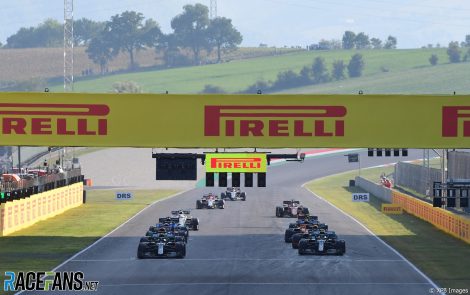
Another key area of Masi’s work is his circuit inspection duties, from new-build designs through to final inspection ahead of a grand prix weekend, and updates to existing tracks.
“Obviously a circuit designer is always involved,” he explains, name-checking big players such as Tilke, Apex, Driven, IDM, Dromo and former F1 driver Alex Wurz. “They present to us what they’re looking to do.
“We, together with the FIA circuit safety department have a look at their design, get all the simulations, run through simulations, We, as the FIA, have the full capability internally to do that. Depending on what it is, if it’s minor modifications, an inspector is empowered to make minor modifications to a venue year on year.
“Let’s use Zandvoort as an example: They had an existing grade two licence that needed to be upgraded to grade one. It went to the circuit commission of the FIA, there are 40-odd members of the circuit commission.
“On the day before the circuit commission meeting we spend a day [examining] all new or major upgrades, which we go through with other inspectors. That gives us lots of different trained sets of eyes, and we work through [the information] collaboratively. Then I go out and look on-site about different things. You can only do so much when you see something on a plan and even with simulations.”
Saudi Arabia’s Jeddah Corniche Circuit, an all-new venue which will hold the penultimate race of 2021, is currently under construction. “We made a number of tweaks to the plan,” says Masi. “Then going through on-site and having a look and seeing what different things actually look like in reality it gives you a very different perspective at times and you make further minor changes along the way.
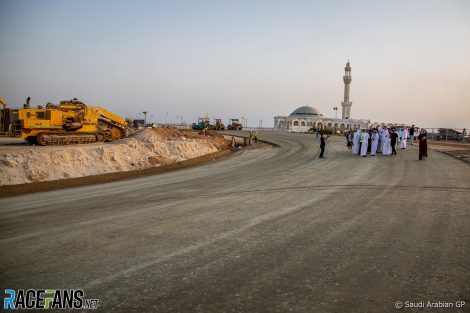
“All of that all comes into the equation, but so does the suitability for other categories. Even though F1 has the highest grade licence because of the speeds of the cars, we also look at different things such as kerb designs and things like that because they may have to suit GT cars and other categories. All those elements need to be taken into consideration.”
Circuits are not, though, the exclusive preserve of four-wheelers. At some venues Masi has to take the requirements of the biking fraternity into account, regularly meeting with 1982 Moto GP world champion Franco Ucini, his FIM circuit inspection equivalent.
“We try and work together to find [mutually acceptable solutions] and we’re in regular contact about a whole range of things.” The Red Bull Ring is one F1 track which is currently undergoing work to make it safer for bikes. Masi calls it “a great example of the changes that they’re looking to make for bikes and how that impacts on cars – the FIA/FIA relationship is currently very, very good at a number of levels.”
But while his work away from race weekends keeps him very busy, the intensity of a grand prix weekend is something else entirely. “The mind goes into overdrive,” he admits. “Afterwards you don’t wind down immediately so I get enough sleep, but probably not as much as I would like.”
So with that I let him get to his hotel room for a catch-up nap before he flies off to Monza after a grand prix that was both a commercial and sporting success – notably, without any red flags during the race itself.
RacingLines
- The year of sprints, ‘the show’ – and rising stock: A political review of the 2021 F1 season
- The problems of perception the FIA must address after the Abu Dhabi row
- Why the budget cap could be F1’s next battleground between Mercedes and Red Bull
- Todt defied expectations as president – now he plans to “disappear” from FIA
- Sir Frank Williams: A personal appreciation of a true racer




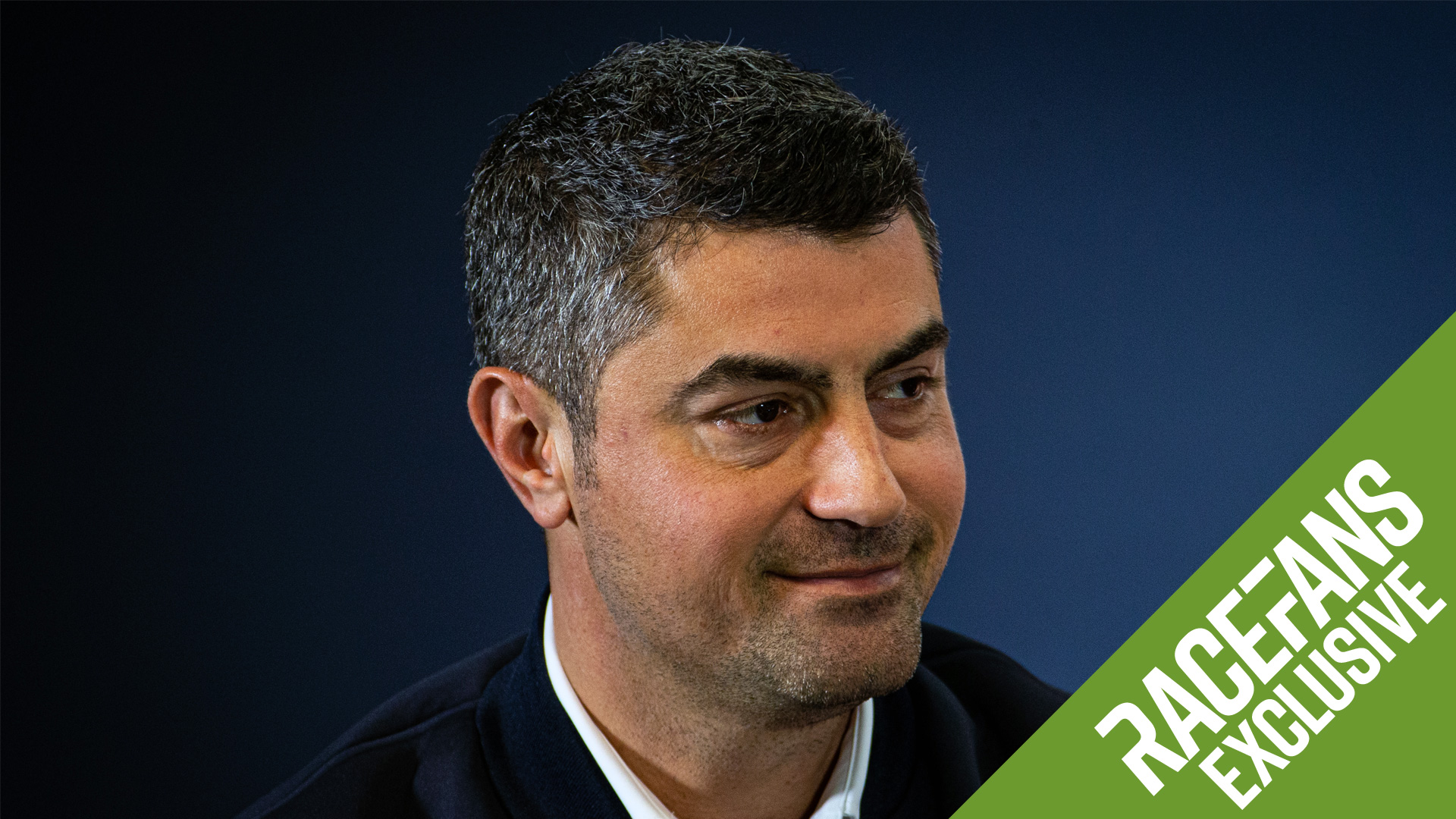
Matthijs (@matthijs)
15th September 2021, 12:12
Good read. However, Whiting died in 2019, not in 2018.
V8hilux
15th September 2021, 12:20
I would say “weak” would sum up his first 50… hopefully he ups his game if he makes the next 50.
Pedro (@)
15th September 2021, 19:24
+1
erikje
15th September 2021, 12:20
It’s a tough job and everyone should be allowed a learning curve
But the curve does not seem to go in the right direction..
Mayrton
15th September 2021, 13:58
I agree. I would expect to see some effect of his learning period. Trigger happy red flag mentality is something the already ‘artificialled up’ series can use. So for now I would rate him with a 6/10 but with an official remark that he needs to up his game or he will end the season on a 5/10 which means replacement
Mayrton
15th September 2021, 13:59
Apologies, I meant to say that the red flag mentality is something the series can do without. I hope Masi feels emplyed by FIA over Liberty. So far I have the impression he seems to get some incentive from Liberty as well
Jere (@jerejj)
15th September 2021, 12:27
So far, the only truly questionable red flag stoppage was the Hungarian GP one.
Chaitanya
15th September 2021, 12:35
Hungarian GP 2021? It was justified given the debry on track and greasy surface from all those collisions on opening lap.
Jere (@jerejj)
15th September 2021, 13:23
Wrong. That amount of debris and stranded cars have been manageable and retrievable under SC before (see Spa 2012&2018 + several others, for instance), so session stoppage was overboard.
Bruuuuuuuuh
15th September 2021, 12:36
You should ask him 2 mainly questions
1) Why do you lie about consequences not playing any role in Steward’s decision making?
2) In Silverstone, Masi said that Toto is welcome to come and say hi to Steward’s
Then, one day later he said that no one can do this.
So, when did he lie to us (again) ? On raceday or after the raceday?
Rhys Lloyd (@justrhysism)
22nd September 2021, 6:01
Maybe after he offered the visit, the stewards turned around and so “no freaking way”, so Masi had to change his tune at their request?
Any number of potential reasons.
Sensord4notbeingafanboi (@peartree)
15th September 2021, 13:09
Mr. Disaster.
Dave
15th September 2021, 16:10
Mr. Dangerous.
Well, hopefully he can turn things around in the next 50 races and he’ll be remembered as an above average race director.
CarWars (@maxv)
15th September 2021, 14:16
He has done 50, let’s get someone else.
Ber101 (@cplchanb)
15th September 2021, 14:18
notice that the masi pulled the first VSC during last race for over a year!
He is notorious for being way too trigger happy on SCs and RFs when the situation does not warrant.
Sure be safe rather than sorry, but he is way too conservative on his decisions. the whole concept
of VCS and its applications do not exist in his standard operating procedures. Its either green or SC or RF…
RandomMallard (@)
15th September 2021, 22:03
@cplchanb Not quite. The last VSC before this last weekend was at Sakhir, for Aitken’s crash where he lost his wing, before that became a full SC. The most recent isolated VSC (I.e. didn’t become a full SC) also happened in Sakhir, for Latifi’s car that broke down.
And tbh, I don’t think there are many other occasions this season that could have warranted a VSC. Maybe Tsunoda’s break down in Spain but that’s probably about it.
And then sometimes his lack of SC has been alarming, particularly for both accidents at Baku, while Hungary was probably the only time a red flag was not definitely justified (although while the red flag in Baku was definitely correct, it was done for all the wrong reasons, and with hindsight maybe should have been done after Stroll’s crash).
Rufernan (@rufernan)
15th September 2021, 14:42
He has performed just fine. Everyone loves to bash this guy – sure there will always be some questionable decisions, but with every team phoning him mid-race, as he explains, he does have to defer to the FIA stewards on most calls.
Report card: 50 races, fair to good performance. (B+).
Also: Other than Charlie, since he set the standard with decades of experience that no one else has or can possibly have, unlikely then that anyone following him would get an A.
Dave
15th September 2021, 16:12
Checking emails would be A+.
Aussie Rod (@aussierod)
15th September 2021, 23:48
Agreed 100%.
Todfod (@todfod)
16th September 2021, 5:44
@rufernan
Agree with you. I don’t think he’s done a bad job so far. People are complaining over the amount of red flags he’s called, which does seem excessive, but then again is it really that bad? He’s taken a route that prioritises safety and he’s also avoided tons of laps behind the safety car where there isn’t any racing anyways. In fact, we get race restarts, which have been quite exciting. I’m honestly not complaining.
Having said that, he could have done a better job at Spa. He played it a little too safe and left the running behind the safety car an hour later than it should have.
anon
16th September 2021, 8:30
It is the oddly inconsistent approach that is a topic of complaint. Whilst you might mention the approach to red flags, on the other hand there were the events in Turkey last year, where there was a rush to restart the session even though the marshals had not yet finished removing a car.
Mister M.
16th September 2021, 12:14
You need to take into account that Michael Masi relies on the information of other people as well in Race Control, especially in most countries where English is not the native language. The Clerk of the Course is normally the person in contact with all Marshall Posts as he is a local person. If, for whatever reason that may be, the Clerk of the Course gives inaccurate information to the Race Director, a decision may prove to be wrong. For example, if the Marshalls told the Clerk of the Course in Turkey that they would finish within a certain amount of time, the restart time of the session will normally be based on that information. There is a whole chain of people involved, so it is not always the Race Director’s fault (although he ultimately bears the final responsibility).
Dave
23rd September 2021, 21:45
Well this is his CV:
– Restarted qualifying while a crane was out on track in Turkey 2020.
– Put marshals closely to the cars.
– Ignored Vettel.
– Handed out points in a race that never started normally.
– Said untrustable lies about Baku 2021.
Michael Masi should be dismissed.
hyoko
15th September 2021, 16:23
Just.Go.Away
Adrian
15th September 2021, 22:18
Hey brains trust folks. Masi is not there by himself pressing the red flag button. Ever since Jules Bianchi died crashing under yellow, F1 has been uber cautious about letting cars circle the track with debry and cars on the side. The only drivers complaining are Ham and Max.
Dave
16th September 2021, 15:19
May I remind you: Silverstone is a racing incident by 100% and Monza is a racing incident by 200%.
Dave
23rd September 2021, 21:43
Wait, you want blood on Masi’s hands?
Jon (@johns23)
16th September 2021, 1:52
He has done a great job so far. Id say its a thankless job that’s for sure
Todfod (@todfod)
16th September 2021, 5:44
True that.
AJ (@asleepatthewheel)
16th September 2021, 3:44
He does appear to err on the side of caution more often than not. A situation which can be handled by VSC, he puts out the SC…an SC worthy situation, he puts out the red flag. I think Japan 2014 and Spa 2019 (F2) have pushed the series towards the side of safety (and avoid lawsuits ofc).
How much of a part Liberty has in this I know not, but I am sure they do factor in somewhere. And Masi being FIA’s mouthpiece ends up taking all the flak.
50 races is an appropriate time for someone to bed into their role, so hopefully we see a rise in the graph from here onwards.
Anon
16th September 2021, 19:11
Mr Red Flag. Weak.
Dave
23rd September 2021, 21:45
Approval rating plummeted.
Pironi the Provocateur (@pironitheprovocateur)
16th September 2021, 23:52
Boo.
Dave
23rd September 2021, 21:46
Blood.